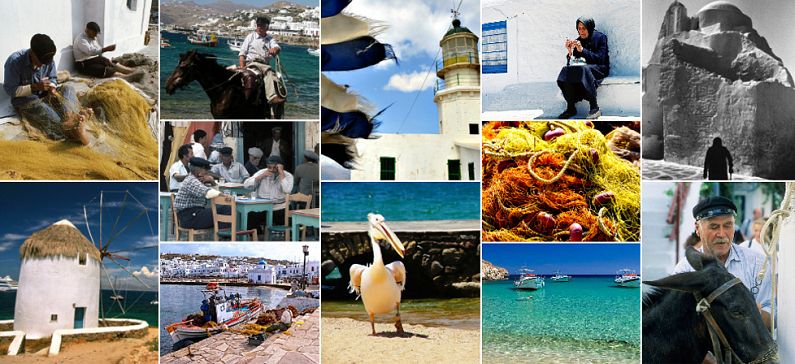
Dailymail: The other side of Mykonos
Dailymail outlines the other side of Mykonos, which according to the British newspaper is calm, with rich culture and cuisine and far more than an up-all-night party destination. Thus the article presents places unspoilt by mass tourism, beaches, hotels away from the noise, monasteries and churches that will transport the visitor 3000 years ago…
Read below the article:
Greek mythology has it that the rocky island of Mykonos was created by Hercules when he hurled a pile of boulders at a group of evil giants who were trying to topple the gods. Today, Mykonos is more the natural home of Dionysus, the god of wine and crazed dancing.
Over the past 40 years, it has become the party island of the Cyclades and one that is particularly popular with gay tourists – although hotels are keen to stress they are ‘straight-friendly’. Clubs in town and along the coast come alive at midnight and stay open until 6am.
For a taste of nocturnal Mykonos, head several streets away from the seafront to Malamatenias, where you’ll find Interni – a restaurant in an open courtyard lined with olive trees. You can eat here – the deep-fried prawns and the snapper are excellent – or have a cocktail at the bar while doing some beautiful-people-watching.
The town is near-empty in the morning, as the clubbers sleep off their hangovers. Then Chora returns to its native inhabitants: the widows in black tending to their potted geraniums and bougainvilleas; the elderly men who look after the tiny Byzantine chapels scattered through the town.
Chora is a series of twisting streets – designed, some say, to confuse raiding pirates; others believe they are to deflect the lethal winds that come whipping in off the Aegean. The two worlds – of pleasure-seekers and locals – co-exist happily enough, working on their different timescales.
And you can still find lots of places unspoilt by mass tourism.
I sit for hours on end on my huge balcony, as the evening light catches the pure white walls of the quarries of Naxos — where some of the best marble in ancient Greece hails from.
Tiny little Delos was the most sacred island in ancient Greece, the birthplace of twins Apollo and Artemis. Today, it is uninhabited, except for the island’s dragon lizards — imported from Africa by the ancient Greeks to honour Apollo’s divine title of ‘Lizard-slayer’. The ruins date from the Romans right back to the 7th century BC, when Delos’s greatest treasures – five crouching, roaring stone lions – were carved.
The coast is ringed with beaches. Those on the south – protected from the northerly winds – tend to be more packed. On the north coast, I have a wind-free, evening swim on crescent-shaped Ftelia Beach, with only two Greek families for company.
At the heart of the island is the town of Ano Mera. There you’ll find the Panagia Tourliani Monastery, the religious heart of Mykonos. The walls of this delicate, 18th-century domed church are crammed with icons. Its classical tower was built as late as the Thirties by marble-cutters from neighbouring Tinos island – you could be forgiven for thinking it was several centuries older. Drive across Mykonos in spring, and tides of soft-blue cornflowers and blood-red poppies stream through the fields, still sprinkled with Hercules’s granite boulders.
You are back in ancient Greece – the thumping nightclubs of Chora feel 3,000 years away.
Source: Dailymail







